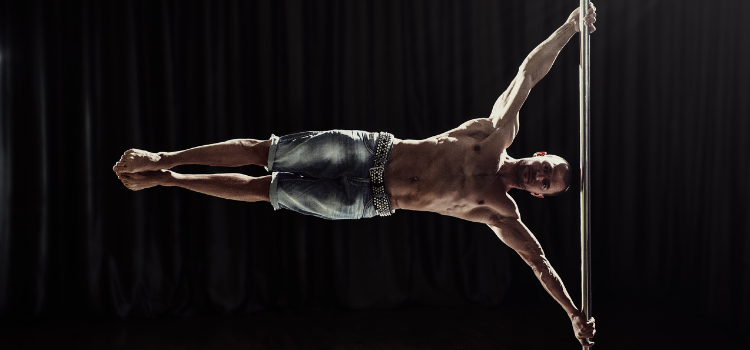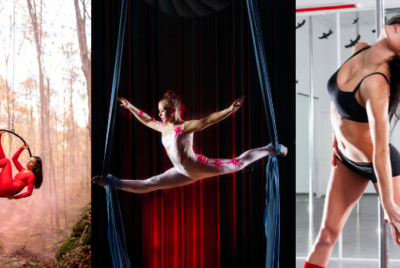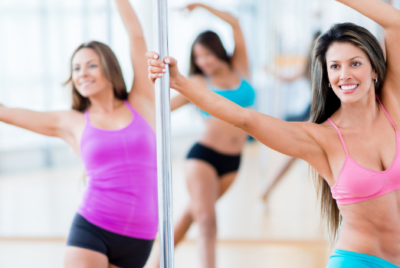Mens Pole Dance: Breaking Stereotypes and Discovering a Passion
As an enthusiast and advisor in the world of pole dancing, I am excited to share with you the empowering and exhilarating journey that is mens pole dance. In this article, we will explore the many benefits of this unique form of fitness, discuss how to get started, learn essential moves and techniques, and address safety concerns. We will also delve into overcoming stereotypes and embracing the vibrant pole dance community. Let’s dive in!
Introduction
When we think of pole dance, an image of graceful and acrobatic women may come to mind. However, it’s essential to break free from these stereotypes and acknowledge that pole dance is for everyone, including men. Mens pole dance is a captivating blend of strength, artistry, and self-expression that offers a multitude of physical and mental benefits. Whether you’re looking to get fit, challenge yourself, or simply explore a new hobby, mens pole dance has something to offer.
Benefits of Mens Pole Dance
Physical Fitness: Mens pole dance is an excellent way to achieve peak physical fitness. It engages multiple muscle groups, including the arms, shoulders, core, and legs. As you progress in your pole dance journey, you’ll notice increased muscle tone, improved cardiovascular endurance, and enhanced stamina. The combination of strength, flexibility, and coordination required in pole dance creates a comprehensive workout that challenges your body in unique ways.
Strength and Muscle Tone: One of the standout benefits of mens pole dance is the development of immense strength and muscle tone. Pole dance requires gripping the pole, supporting body weight, and executing intricate moves that demand substantial upper body and core strength. As you conquer new moves and transitions, you’ll witness your muscles becoming leaner and more defined. The progressive nature of pole dance ensures constant muscle engagement and continuous improvement.
Flexibility and Range of Motion: Flexibility is a crucial component of mens pole dance. Regular training sessions will gradually increase your range of motion, allowing you to perform more advanced moves and fluid transitions. Pole dance incorporates dynamic stretches and movements that elongate muscles, improve joint mobility, and enhance overall flexibility. With time and dedication, you’ll achieve greater suppleness, which can positively impact your overall physical performance.
Confidence and Body Image: Engaging in mens pole dance can significantly boost your confidence and improve body image. As you master challenging moves and witness your progress, you’ll develop a deep sense of accomplishment and self-assurance. Pole dance encourages self-expression and celebrates individuality, helping you embrace your unique physique and feel comfortable in your own skin. The supportive pole dance community also plays a vital role in fostering a positive body image and self-esteem.
Creative Expression and Artistry: Mens pole dance is an art form that allows for boundless creative expression. Through fluid movements, spins, and choreography, you can create visually stunning routines that captivate and inspire. Pole dance encourages you to explore different styles, experiment with music, and infuse your own personality into your performances. It’s a beautiful amalgamation of strength, athleticism, and artistic expression that offers a unique and fulfilling creative outlet.
Getting Started with Mens Pole Dance
Now that we’ve uncovered the incredible benefits of mens pole dance, let’s discuss how you can get started on your own journey.
Finding a Reputable Studio: Finding a reputable pole dance studio is crucial for beginners. Look for a studio that offers classes specifically tailored for men, as they will provide a supportive environment and instruction catered to your needs. Read reviews, visit studios, and talk to instructors to ensure you find the right fit. A positive and inclusive studio will make your pole dance experience more enjoyable and fulfilling.
Selecting the Right Pole: Choosing the right pole for your practice is essential. There are various types of poles available, such as static and spinning poles, and each offers a unique experience. Consider factors like grip, stability, and portability when making your selection. Additionally, ensure that the pole is properly installed and secure before attempting any moves. Safety should always be a top priority.
Choosing Appropriate Attire: Selecting appropriate attire for mens pole dance is important to ensure comfort, freedom of movement, and safety. Opt for form-fitting clothing that allows your skin to grip the pole without slipping. Shorts and tank tops are popular choices, as they allow for maximum skin contact with the pole. Avoid wearing jewellery or accessories that may snag on the pole and cause injuries.
Essential Moves and Techniques
As you embark on your pole dance journey, mastering essential moves and techniques is fundamental. Let’s explore some of the key elements of pole dance.
Basic Grips and Holds: Basic grips and holds form the foundation of pole dance. These include the cup grip, split grip, and wrist grip, among others. Learning proper hand placement and grip techniques will ensure your safety and enable you to execute moves with control and stability.
Spins and Turns: Spins and turns are dynamic and visually striking elements of pole dance. They require coordination, core engagement, and precise body positioning. Popular spins for beginners include the fireman spin and the chair spin. As you progress, more challenging spins, such as the brass monkey spin and the extended butterfly spin, await your exploration.
Climbing and Inversions: Climbing the pole and performing inversions are advanced techniques that showcase your strength and control. Start with basic climbs, gradually building the necessary upper body and core strength. Inversions, such as the straddle invert and the shoulder mount, require practice, proper technique, and trust in your abilities.
Floor Work and Transitions: Floor work and transitions add fluidity and grace to your pole dance routines. These movements involve seamless transitions between standing, kneeling, and floor-based poses. Incorporate leg waves, body rolls, and floor spins to enhance the flow and artistic quality of your performances.
Progressive Training and Advancement
To continue growing as a male pole dancer, progressive training and advancement are key. Here are some essential aspects to consider.
Building Strength and Endurance: Consistent training is essential for building strength and endurance. Incorporate exercises like push-ups, pull-ups, and core strengthening into your regular fitness routine to supplement your pole dance training. Regular practice on the pole, combined with targeted exercises, will help you conquer more challenging moves and increase your stamina.
Increasing Flexibility: Flexibility is an ongoing journey in pole dance. Integrate regular stretching exercises, such as splits and backbends, into your training routine to improve your overall flexibility. Stretching after each training session will help prevent muscle tightness and aid in injury prevention.
Learning Intermediate and Advanced Moves: Once you’ve mastered the basics, it’s time to challenge yourself with intermediate and advanced moves. Work closely with your instructor to progress at a pace that is appropriate for your skill level. Learning more complex moves, transitions, and combinations will keep your pole dance journey exciting and rewarding.
Safety Precautions and Injury Prevention
Safety should always be a top priority when pole dancing. By following these safety precautions, you can minimise the risk of injuries.
Warming Up and Cooling Down: Before every training session, dedicate time to warm up your muscles and prepare your body for the physical demands of pole dance. Engage in dynamic stretching exercises, such as arm circles and hip rotations, to increase blood flow and loosen up your joints. Cooling down with static stretches after training will help prevent muscle soreness and promote recovery.
Proper Form and Technique: Maintaining proper form and technique is crucial to prevent injuries. Listen to your instructor’s guidance and focus on executing moves with correct alignment and control. Avoid rushing through progressions and ensure that you have a solid foundation before attempting more challenging moves. It’s better to progress gradually than to risk injury due to improper technique.
Using Crash Mats and Spotting: When attempting advanced moves or practising new tricks, using crash mats and having a spotter can provide an extra layer of safety. Crash mats cushion falls and reduce the impact on your joints. A spotter can provide support and assistance when attempting challenging moves, minimising the risk of accidents.
Listening to Your Body: Listening to your body is essential in men’s pole dance. Pay attention to any discomfort or pain and take breaks when needed. Pushing through fatigue or ignoring warning signs can lead to overuse injuries. Rest and recovery are just as important as training, so prioritise self-care and give your body the time it needs to heal and regenerate.
Overcoming Stereotypes and Stigma
Mens pole dance continues to face stereotypes and stigma, but as an enthusiast, you have the power to challenge these misconceptions and promote inclusivity. Here’s how:
Educating Others and Promoting Inclusivity: Educate others about the inclusive nature of male pole dancers. Share your experiences, the benefits you’ve gained, and the joy it brings to your life. By dispelling myths and misconceptions, you can encourage others to embrace the artistry and athleticism of men’s pole dance.
Celebrating Male Pole Dancers: Highlight and celebrate the achievements of male pole dancers. Share their performances, stories, and contributions to the pole dance community on social media and within your local circles. By shining a spotlight on their talent and dedication, you help break down barriers and foster acceptance.
Embracing the Pole Dance Community
The pole dance community is a vibrant and supportive network that offers countless opportunities for growth and connection. Here’s how you can fully embrace this community.
Participating in Competitions and Showcases: Consider participating in pole dance competitions and showcases. These events provide a platform to showcase your skills, gain confidence, and connect with fellow pole dancers. The experience of performing in front of an audience can be exhilarating and transformative.
Attending Workshops and Events: Attending workshops and events allows you to learn from experienced pole dancers and expand your skill set. Workshops offer specialised training on various aspects of pole dance, such as choreography, tricks, and conditioning. Additionally, events like pole dance conventions provide opportunities to connect with renowned pole dancers and immerse yourself in the vibrant pole dance community.
Connecting with Other Pole Dancers: Forge connections with other pole dancers, both online and in-person. Join online communities, social media groups, and forums where you can share experiences, seek advice, and celebrate achievements. Attending pole jams or forming a practice group with fellow enthusiasts can also foster camaraderie and inspire growth in your pole dance journey.
Conclusion
Pole dancing is a captivating and empowering journey for men as well as women, which defies stereotypes and encourages self-expression. From the physical fitness benefits to the artistic creativity it fosters, mens pole dance offers a unique and fulfilling experience. By breaking down barriers, embracing the pole dance community, and challenging societal norms, we can celebrate and promote the inclusive nature of male pole dancing. So, seize the pole, embark on this exhilarating adventure, and let your passion soar to new heights!
FAQs (Frequently Asked Questions)
Q1: Can men do pole dance?
A1: Absolutely! Pole dance is inclusive and welcomes participants of all genders. Men can excel in pole dance and enjoy the numerous physical and mental benefits it offers.
Q2: Do I need prior dance or fitness experience to start?
A2: No prior dance or fitness experience is necessary to start pole dancing. Beginners are welcome and encouraged to join classes at their own pace. The supportive environment of a pole dance studio will help you learn and progress regardless of your starting point.
Q3: What should I expect in my first pole dance class?
A3: In your first pole dance class, you can expect to learn foundational moves, proper grips, and basic spins. The instructor will guide you through warm-up exercises and provide step-by-step instructions for each move. It’s normal to feel a combination of excitement and nervousness, but remember that everyone starts somewhere, and progress comes with practice.
Q4: Is pole dance only for performing, or can it be a fitness routine?
A4: Pole dance can be both a performing art and a fitness routine. Many people enjoy the physical and mental benefits of pole dance without performing publicly. Whether you choose to perform or keep it as a personal fitness routine, men’s pole dance offers a fulfilling and rewarding experience.
Q5: How long does it take to become proficient in pole dance?
A5: The time it takes to become proficient in pole dance varies depending on several factors, such as your starting fitness level, training frequency, and dedication. With consistent practice and commitment, you can expect to see progress within a few months. However, pole dance is an ongoing journey, and even experienced pole dancers continue to learn and refine their skills.




